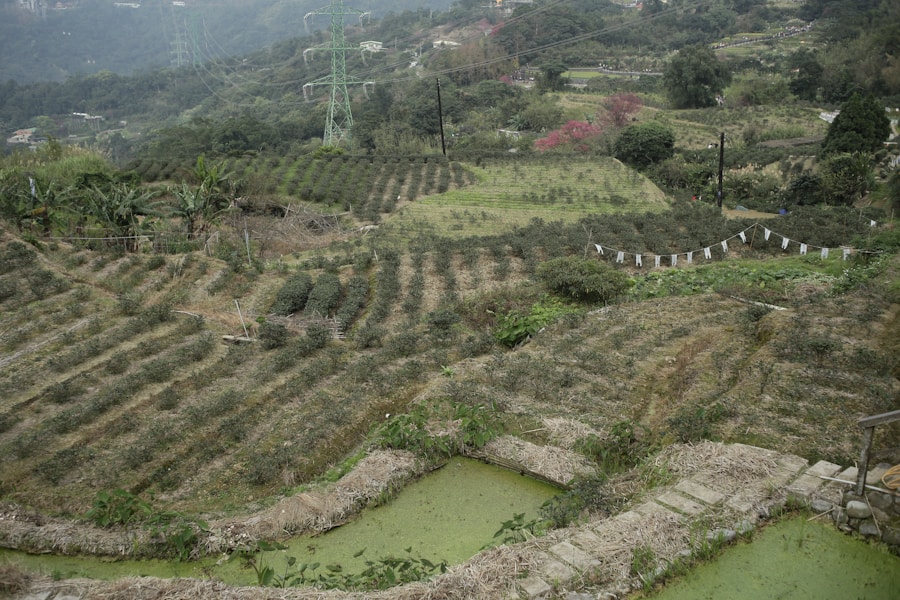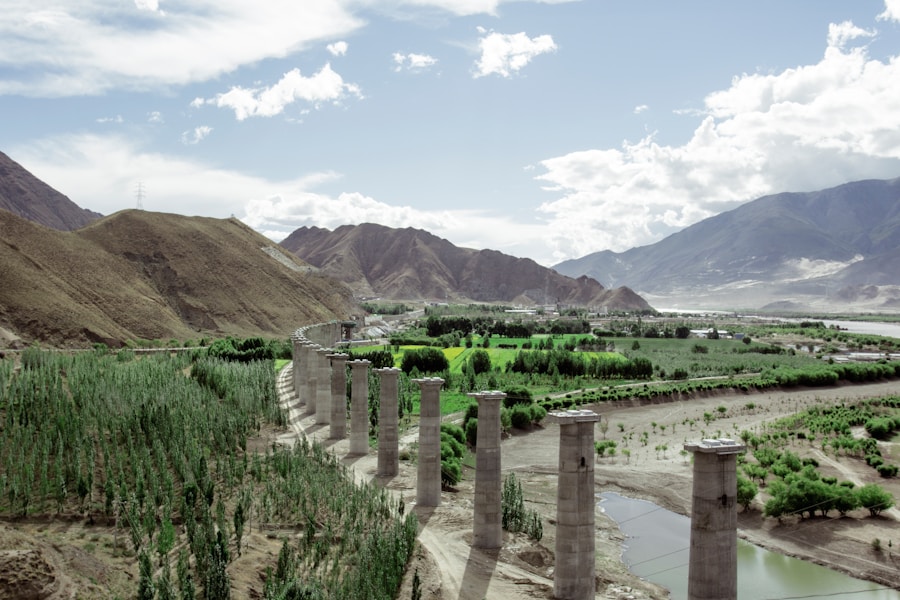River valley civilizations emerged as some of the earliest and most influential societies in human history, flourishing in regions where fertile land and abundant water resources converged.
The proximity to rivers provided not only a reliable source of water for irrigation but also facilitated trade and communication, allowing these societies to thrive and expand.
The development of river valley civilizations marked a pivotal transition from nomadic lifestyles to settled agricultural communities. This shift enabled populations to grow, leading to the establishment of cities and the rise of governance systems. The interplay between geography and human ingenuity in these river valleys laid the groundwork for cultural advancements, including writing systems, religious practices, and monumental architecture.
As these civilizations evolved, they set the stage for future societies, influencing political structures, economic systems, and cultural norms that would resonate through history.
Key Takeaways
- River valley civilizations were the cradle of early human societies and played a crucial role in the development of agriculture and civilization.
- River valleys provided fertile land, water for irrigation, and transportation, which were essential for the growth of early agricultural practices.
- Environmental factors such as climate, soil quality, and water availability greatly influenced the success of agricultural development in river valley civilizations.
- River valley civilizations shaped early societies by providing a stable food supply, fostering trade and commerce, and creating social and political structures.
- The legacy of river valley civilizations can be seen in modern agriculture through the continued use of irrigation, crop cultivation, and the development of agricultural technologies.
The Importance of River Valleys in Early Agriculture
The significance of river valleys in early agriculture cannot be overstated. These regions provided the essential ingredients for successful farming: fertile soil, ample water supply, and a favorable climate. The annual flooding of rivers such as the Nile or the Tigris and Euphrates deposited nutrient-rich silt onto surrounding lands, creating ideal conditions for crop cultivation.
This natural irrigation system allowed early farmers to grow staple crops like wheat, barley, and rice, which formed the backbone of their diets and economies. Moreover, the predictability of river flooding cycles enabled agricultural societies to develop sophisticated farming techniques. For instance, the Egyptians mastered the art of basin irrigation, which involved creating a series of basins to capture floodwaters for later use.
This innovation not only maximized crop yields but also allowed for multiple harvests throughout the year. Similarly, in Mesopotamia, the Sumerians developed an extensive network of canals to divert river water to their fields, demonstrating an early understanding of hydraulic engineering that would influence agricultural practices for centuries.
The Impact of Environmental Factors on Agricultural Development

Environmental factors played a crucial role in shaping the agricultural practices of river valley civilizations. Climate variations, soil composition, and topography influenced what crops could be cultivated and how farming was conducted.
Soil quality also varied significantly across different river valleys. The alluvial plains of the Indus Valley were particularly fertile due to sediment deposits from the Indus River, which supported diverse agricultural activities. In contrast, areas with less fertile soil required more intensive farming techniques or crop rotation strategies to maintain productivity.
These environmental challenges prompted innovations in farming methods and tools, such as plows and seed drills, which were developed to enhance efficiency and yield.
The Role of River Valley Civilizations in Shaping Early Societies
River valley civilizations were instrumental in shaping early human societies through their contributions to social organization, governance, and culture. The concentration of populations in these fertile areas led to the emergence of complex social hierarchies. As agricultural surpluses increased, so did specialization in labor; artisans, traders, and bureaucrats began to emerge alongside farmers.
This diversification of roles fostered economic interdependence and laid the foundation for trade networks that extended beyond local communities. Governance structures also evolved in response to the challenges posed by managing resources and maintaining order within growing populations. In many river valley civilizations, centralized authorities emerged to oversee agricultural production, manage irrigation systems, and enforce laws.
For instance, in ancient Egypt, pharaohs were viewed as divine rulers who not only governed but also played a crucial role in ensuring the annual flooding of the Nile—a vital aspect of agricultural success. This intertwining of religion and governance reinforced social cohesion and established a framework for societal stability.
The Legacy of River Valley Civilizations on Modern Agriculture
The legacy of river valley civilizations is evident in modern agricultural practices that continue to draw inspiration from ancient techniques. The principles of irrigation developed by these early societies have evolved into sophisticated systems used today, such as drip irrigation and sprinkler systems that maximize water efficiency while minimizing waste. The understanding of crop rotation and soil management that emerged from these civilizations has also influenced contemporary sustainable farming practices aimed at preserving soil health and enhancing biodiversity.
Furthermore, the cultural significance of agriculture established by river valley civilizations persists in modern societies. Festivals celebrating harvests and agricultural traditions can trace their roots back to these early communities that revered the land and its bounty. The innovations in agricultural technology initiated by these civilizations laid the groundwork for future advancements in farming equipment and practices that have transformed food production on a global scale.
The Ongoing Influence of River Valleys on Agricultural Practices

Adapting to Environmental Conditions
The ability to adapt to environmental conditions through innovative techniques is a legacy that continues to inspire contemporary farmers seeking to balance productivity with ecological stewardship. Ancient river valley civilizations demonstrated remarkable ingenuity in overcoming environmental challenges, and their achievements serve as a reminder of humanity’s capacity to do so.
Foundational Principles of Agriculture
In essence, river valley civilizations not only shaped the course of human history but also established foundational principles that guide agricultural practices today. Their innovative approaches to agriculture continue to influence modern farming methods, offering a rich heritage that can inform sustainable solutions for the future.
Toward Sustainable Solutions
As we navigate an increasingly complex world, revisiting these ancient practices may provide pathways toward sustainable solutions that honor both our past and our future. By learning from the achievements of ancient river valley civilizations, we can foster community resilience through agriculture and create a more sustainable food system for generations to come.
If you are interested in exploring the relationship between language and meaning, you may want to check out the article The Theories of Meaning in Language. This article delves into the various theories that attempt to explain how language conveys meaning and the complexities involved in understanding semantics. It provides a fascinating look at the intricate nature of language and communication, which are essential components of early civilizations like the River Valley Civilizations.
FAQs
What are river valley civilizations?
River valley civilizations are early human societies that developed along the banks of major rivers, such as the Nile, Tigris and Euphrates, Indus, and Yellow River. These civilizations were characterized by advanced agricultural practices, complex social structures, and the development of written language and organized government.
How did river valleys support early agriculture?
River valleys provided fertile soil and access to water for irrigation, which allowed for the cultivation of crops and the development of agriculture. The annual flooding of rivers also deposited nutrient-rich silt, further enhancing the fertility of the soil.
What were the major river valley civilizations?
The major river valley civilizations include the ancient Egyptian civilization along the Nile River, the Mesopotamian civilizations along the Tigris and Euphrates Rivers, the Indus Valley civilization along the Indus River, and the ancient Chinese civilization along the Yellow River.
What role did the environment play in the development of river valley civilizations?
The environment played a crucial role in the development of river valley civilizations by providing the necessary resources for agriculture, such as fertile soil, water for irrigation, and natural barriers for protection. The environment also influenced the cultural and religious beliefs of these civilizations.
How did river valley civilizations impact later societies?
The advancements made by river valley civilizations in agriculture, technology, and governance laid the foundation for later societies and influenced the development of human civilization. Many of the practices and innovations of these early civilizations continue to influence modern societies.






















+ There are no comments
Add yours